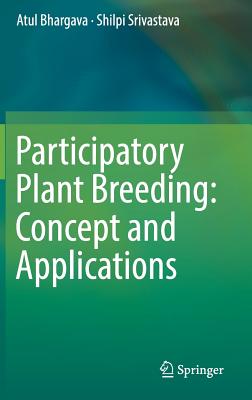Design for Community: The Art of Connecting Real People in Virtual Places
暫譯: 社群設計:在虛擬空間中連結真實人群的藝術
Derek Powazek
- 出版商: New Riders
- 出版日期: 2001-08-09
- 售價: $1,360
- 貴賓價: 9.5 折 $1,292
- 語言: 英文
- 頁數: 336
- 裝訂: Paperback
- ISBN: 0735710759
- ISBN-13: 9780735710757
-
相關分類:
遊戲引擎 Game-engine、行銷/網路行銷 Marketing
已過版
買這商品的人也買了...
-
 CGI Programming with Perl, 2/e
CGI Programming with Perl, 2/e$1,590$1,511 -
 Core Java 2, Volume 1: Fundamentals, 5/e
Core Java 2, Volume 1: Fundamentals, 5/e$1,880$1,786 -
 Web Redesign: Workflow That Works (Paperback)
Web Redesign: Workflow That Works (Paperback)$1,880$1,786 -
 $970Introduction to Algorithms, 2/e
$970Introduction to Algorithms, 2/e -
 $825Cisco CCNA Exam #640-607 Certification Guide, 3/e
$825Cisco CCNA Exam #640-607 Certification Guide, 3/e -
 LPI Linux 資格檢定 (LPI Linux Certification in a Nutshell)
LPI Linux 資格檢定 (LPI Linux Certification in a Nutshell)$880$695 -
 Beyond Borders: Web Globalization Strategies
Beyond Borders: Web Globalization Strategies$1,710$1,625 -
 MCSE Microsoft Windows 2000 Directory Services Infrastructure 考題研究 70-217
MCSE Microsoft Windows 2000 Directory Services Infrastructure 考題研究 70-217$450$356 -
 $750designing web graphics.4, 4/e
$750designing web graphics.4, 4/e -
 Java 完美經典優質學習篇
Java 完美經典優質學習篇$750$638 -
 資訊架構學網站應用 (Information Architecture for the World Wide Web, 2/e)
資訊架構學網站應用 (Information Architecture for the World Wide Web, 2/e)$680$537 -
 ASP.NET 程式設計徹底研究
ASP.NET 程式設計徹底研究$590$466 -
 STRUTS 實作手冊(Struts in Action: Building Web Applications with the Leading Java Framework)
STRUTS 實作手冊(Struts in Action: Building Web Applications with the Leading Java Framework)$690$538 -
 深入淺出 JBuilder 程式設計實作(JBuilder 9.0/8.0/7.0 適用) (Charlie Calvert's Learn Jbuilder)
深入淺出 JBuilder 程式設計實作(JBuilder 9.0/8.0/7.0 適用) (Charlie Calvert's Learn Jbuilder)$720$562 -
 重構─改善既有程式的設計
重構─改善既有程式的設計$720$569 -
 Practical Java Programming Language Guide 中文版 (Practical Java Programming Language Guide)
Practical Java Programming Language Guide 中文版 (Practical Java Programming Language Guide)$560$442 -
 鳥哥的 Linux 私房菜-伺服器架設篇
鳥哥的 Linux 私房菜-伺服器架設篇$750$638 -
 Flash MX 2004 十項全能
Flash MX 2004 十項全能$550$468 -
 Imperfect C++ : Practical Solutions for Real-Life Programming
Imperfect C++ : Practical Solutions for Real-Life Programming$1,920$1,824 -
 $1,166Distributed Systems: Concepts and Design, 4/e
$1,166Distributed Systems: Concepts and Design, 4/e -
 Everyware: The Dawning Age of Ubiquitous Computing
Everyware: The Dawning Age of Ubiquitous Computing$1,540$1,463 -
 Eric Sink on the Business of Software
Eric Sink on the Business of Software$1,390$1,321 -
 Dreaming in Code: Two Dozen Programmers, Three Years, 4,732 Bugs, and One Quest for Transcendent Software
Dreaming in Code: Two Dozen Programmers, Three Years, 4,732 Bugs, and One Quest for Transcendent Software$900$855 -
 隨意搜尋 (Ambient Findability)
隨意搜尋 (Ambient Findability)$650$514 -
 Artificial Intelligence: A Modern Approach, 3/e (IE-Paperback)
Artificial Intelligence: A Modern Approach, 3/e (IE-Paperback)$1,300$1,274
商品描述
Communities are part of all successful web sites in one way or another. It
looks at the different stages that must be understood:Philosophy: Why does your
site need community? What are your measures of success?Architecture: How do you
set up a site to createpositive experience? How do you coax people out of their
shells and get them to share their experiences online?Design: From color choice
to HTML, how do you design the look of a community area?Maintenance: This
section will contain stories of failed web communities, and what they could have
done to stay on track, as well as general maintenance tips andtricks for keeping
your community <169>garden<170> growing.
Table of Contents
Preface.
Introduction.
1. Is This Trip Really Necessary?…What to Know Before You Begin.
2. Content Comes First…Give Your Community Something to Talk About.
3. Design Matters…Architectural and Visual Design for Successful
Communities.
4. Tools for Doing the Heavy Lifting…How to Power Your Community.
5. Policies and Policing…Setting, Communicating, and Enforcing the Rules.
6. Moderation, Karma, and Flame Bait…How to Survive Your Own Users.
7. Chat, Cams, and Virtual Intimacy…Seeing Computers as Intimacy Devices.
8. Barriers to Entry…Making Them Work for It.
9. Email Keeps the Conversation Alive…Community That Comes to You.
10. Commerce Communities…How to Keep Money from Screwing Everything Up.
11. Killing Your Community…Nothing Gold Can Stay.
12. What's Next?…Back to the Future.
Postscript.
商品描述(中文翻譯)
社群在所有成功的網站中以某種方式都是不可或缺的一部分。這本書探討了必須理解的不同階段:哲學:為什麼你的網站需要社群?你的成功指標是什麼?架構:如何設置網站以創造正面的體驗?如何引導人們走出自己的殼,讓他們在線上分享經驗?設計:從顏色選擇到 HTML,如何設計社群區域的外觀?維護:本節將包含失敗的網路社群故事,以及他們可以做什麼來保持正軌,還有一般的維護技巧和竅門,以保持你的社群「花園」持續成長。
目錄
前言。
我在高中代數課上學到的所有關於網路社群的知識。
引言。
網路是不同的。定義術語。對這本書的期望。我是誰。
1. 這趟旅程真的有必要嗎?……開始之前需要知道的事。
壞理由 #1:「因為這很酷!」壞理由 #2:「因為我們會獲得免費內容!」質疑假設。好的理由。所有系統啟動——添加社群功能。準備好接受特寫了嗎?
2. 內容優先……給你的社群一些可以討論的話題。
水井乾涸。你得到的就是你給的。個人故事的力量。有效的內容。內容與內容。與 Matt Haughey 的對話。
3. 設計很重要……成功社群的架構與視覺設計。
一般設計。基本要素。社群設計。規則 #1:將內容直接與社群聯繫。規則 #2:隱藏發佈按鈕。規則 #3:放棄控制(讓你的用戶驚喜你)。設計很重要。一切都是設計。與 Steven Johnson 的對話。
4. 重任工具……如何為你的社群提供動力。
買還是不買?獲得願景。讓我們去購物。決定什麼對你來說是合適的。設計優先。與 jGurus 的對話。
5. 政策與執法……設定、傳達和執行規則。
教訓。看不見的規則根本不是規則。執行規則。障礙與主持人。與 Caleb Clark 的對話。
6. 版主、因果與火焰誘餌……如何生存於自己的用戶之中。
不僅是視覺和聲音的維度,還有心靈的維度。一切都會好起來的。儘可能將虛擬與現實聯繫起來。版主、元版主與因果正義。即時因果。但等等,還有元!當我跌倒時抓住我。與 Rob Malda 的對話。
7. 聊天、攝影機與虛擬親密……將電腦視為親密設備。
親密不等於性(通常)。親密計算。親密的要素。這裡有熱辣女孩嗎?魔法要素。與 John Styn 的對話。
8. 進入障礙……讓他們為此努力。
壞假設 1:社群對所有人開放。壞假設 2:障礙是壞事。我不喜歡給的建議。三種障礙。障礙會隨時間改變。雙向的障礙。障礙是好的。與 Emma Taylor 的對話。
9. 電子郵件保持對話活躍……社群主動找上你。
行業工具。兩種清單。主動找上你的社群。設計電子郵件。擁有權的好與壞。電子郵件與網路:兩種絕配的美味。黑暗面。建立連結。與 Steve Champeon 的對話。
10. 商業社群……如何避免金錢搞砸一切。
商業網站孕育商業社群。早期採用者:Saturn。利用顧客忠誠度。成功的公司鼓勵社群。TiVo 的成功故事。跟隨領導者。輪到你了。與人共舞!與 Matt Williams 的對話。
11. 殺死你的社群……沒有什麼金色的東西能永恆。
所有美好的事物都必須結束。是時候拔掉插頭了嗎?結束的好理由。社群的凱沃基安。要存檔還是不存檔?故事:玻璃狗俱樂部。設計考量。告別。與 Noah Grey 的對話。
12. 接下來是什麼?……回到未來。
數位散居。擬人化。多樣化。視覺精緻。要不要玩個遊戲?虛擬遊戲室。在虛擬世界中的角色扮演。小學重溫。遊戲的魅力是什麼?社群控制的編輯。變得真實。回到未來。與 Howard Rheingold 的對話。
後記。
我們接下來該往哪裡去?






























